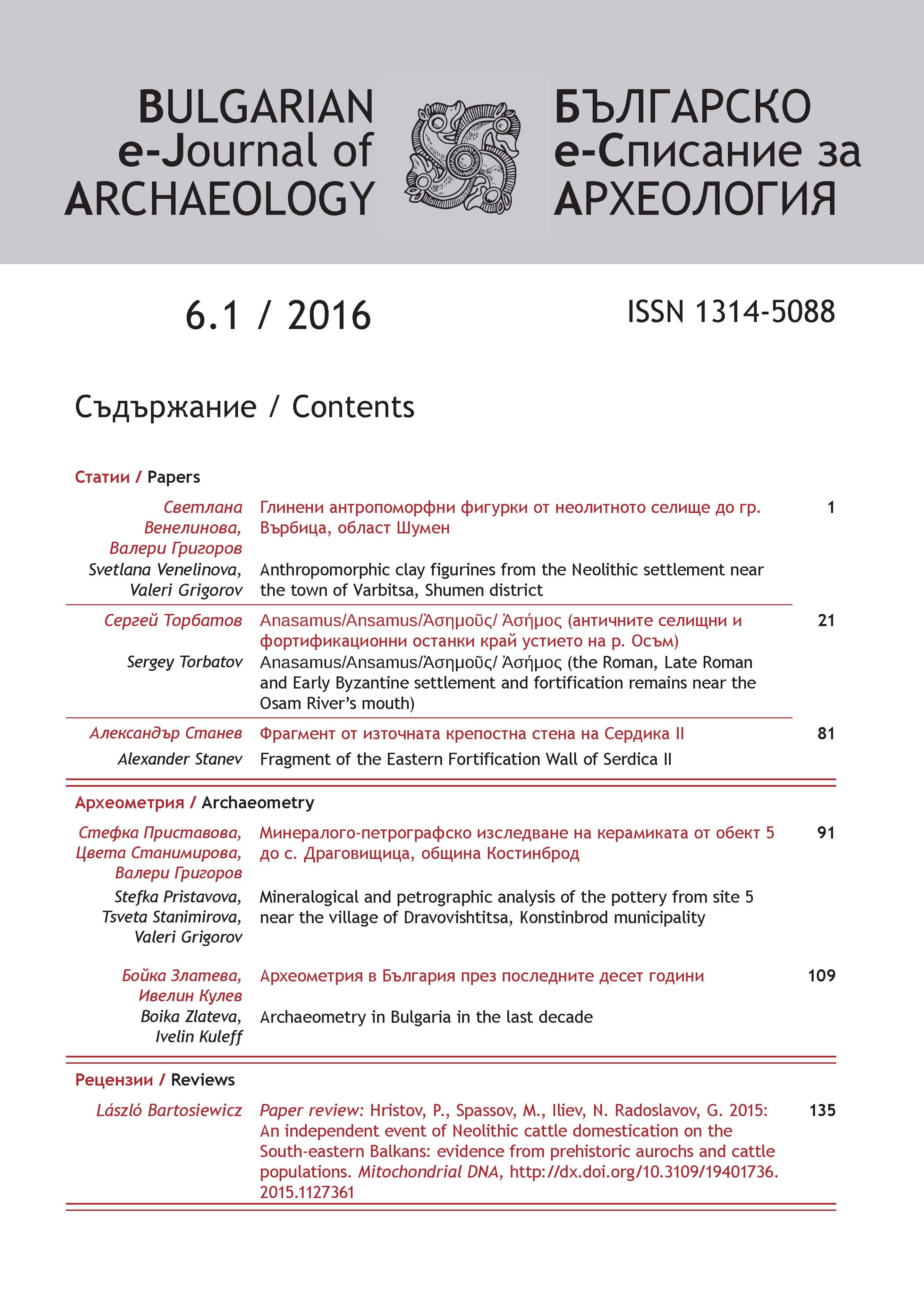Глинени антропоморфни фигурки от неолитното селище до гр. Върбица, област Шумен
Anthropomorphic clay figurines from the Neolithic settlement near the town of Varbitsa, Shumen district
Author(s): Svetlana Venelinova, Valeri GrigorovSubject(s): History, Archaeology, Cultural history, Ancient World
Published by: Асоциация на българските археолози
Keywords: anthropomorphic figurines; Neolithic; Ovcharovo culture; prehistoric art
Summary/Abstract: Archaeological excavations of the Early Iron Age site of Kalakača in northern Serbia revealed the presence of numerous pit-features and traces of several possible above-ground structures. A number of pits were interpreted as storage features. Moreover, the charred plant remains in some of them were taken as an evidence of the function of the pits as crop stores/granaries. Archaeobotanical analysis confirmed the presence of a range of crops in the pits; however, the circumstances in which the charred crop remains were found strongly suggest that there is no direct connection between the plant material and the pit-features. No traces of in situ burning were detected in the excavated pits, demonstrating that the charring of plants happened outside. The use of charred plant remains as evidence for the storage of crops in the Kalakača pits can thus be dismissed. The plant material was perhaps charred within the surface structures. The analysis of the type of plant parts re-deposited in the pits reveals the presence of crop products – chiefly millet grain (most likely semi-cleaned) and some barley grain; and crop processing by-products – wheat and barley chaff. Millet grain may have originated from millet stores; cereal chaff may have arrived in the pits as daub temper or as crop processing residue discarded in fire. The paper discusses ten anthropomorphic figurines that were found during the archaeological investigation of a multilayer site near the town of Varbitsa in 2015 (fig.1). They were found in stratigraphic layers associated with phases Karanovo II-III (cat. nos. 1–7) and Кaranovo II (cat. nos. 9–10) and predominantly represent strongly stylized female bodies. This style is characteristic for the entire Early Neolithic Balkan-Anatolian cultural block. An attempt to render some individualization is visible at one of the figurines whose body is made in a dynamic ‘dancing’ pose and the face expresses a strong emotion (figs. 3.4, 4.4). The typological characteristics of these Neolithic figurines link them to the Ovcharovo culture in Northeast Bulgaria and its variant Samovodene in Central North Bulgaria.
Journal: Българско е-Списание за Археология
- Issue Year: 6/2016
- Issue No: 1
- Page Range: 1-19
- Page Count: 19
- Language: English, Bulgarian

